In much of our modern day world, the conventional view of dead wood is often that it is unsightly, untidy and a waste if it is left lying around in a woodland, and that it should be tidied up, taken away and used for some human purpose. Sadly, this reflects a lack of understanding of how healthy ecosystems function, and is an indication of how far removed from Nature our society has become. Here at the Findhorn Hinterland we seek to reconnect deeply with our local environment and demonstrate a renewed way of living in harmony and balance with the natural world around us, so our approach to dead wood is quite different.
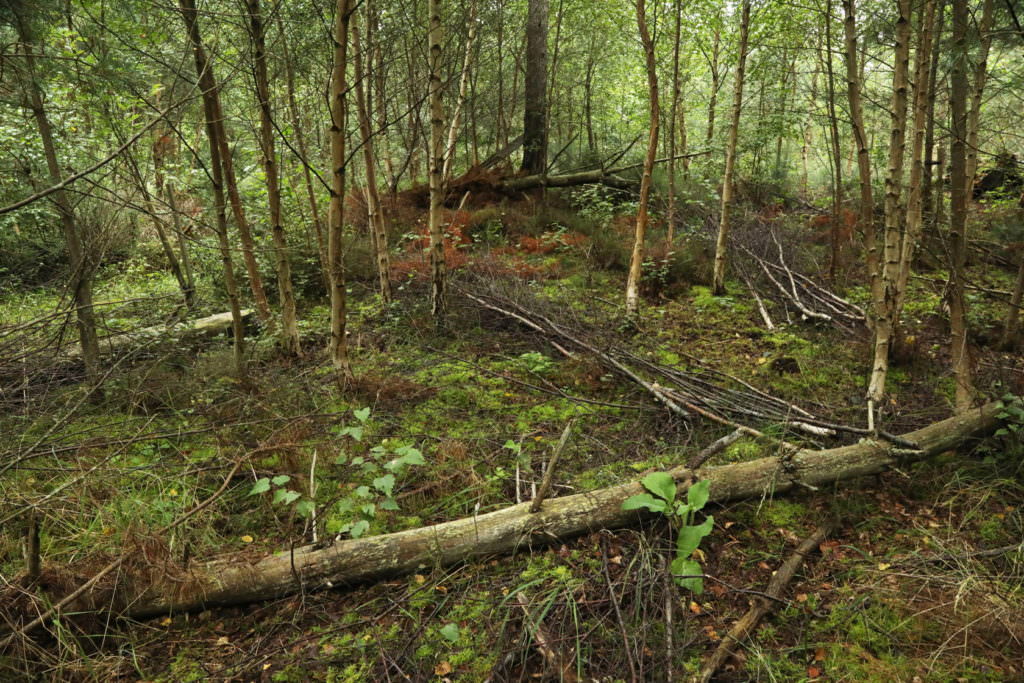
Young regenerating birch trees in the Fallen Acres area of the Findhorn Hinterland, showing dead wood left on the forest floor.
Dead wood is quite literally the compost heap of the forest – the place where old organic material is broken down naturally, recycled and reintegrated back into the living web of life that is a woodland ecosystem. An entire community of specialist organisms lives on and in dead wood, having evolved specifically to play a role in Nature’s recycling process. These organisms include fungi, slime moulds, woodlice, beetle larvae, springtails, mites and millipedes, to name some of them, as well as various predators such as spiders and centipedes that feed on the invertebrates in dead wood.
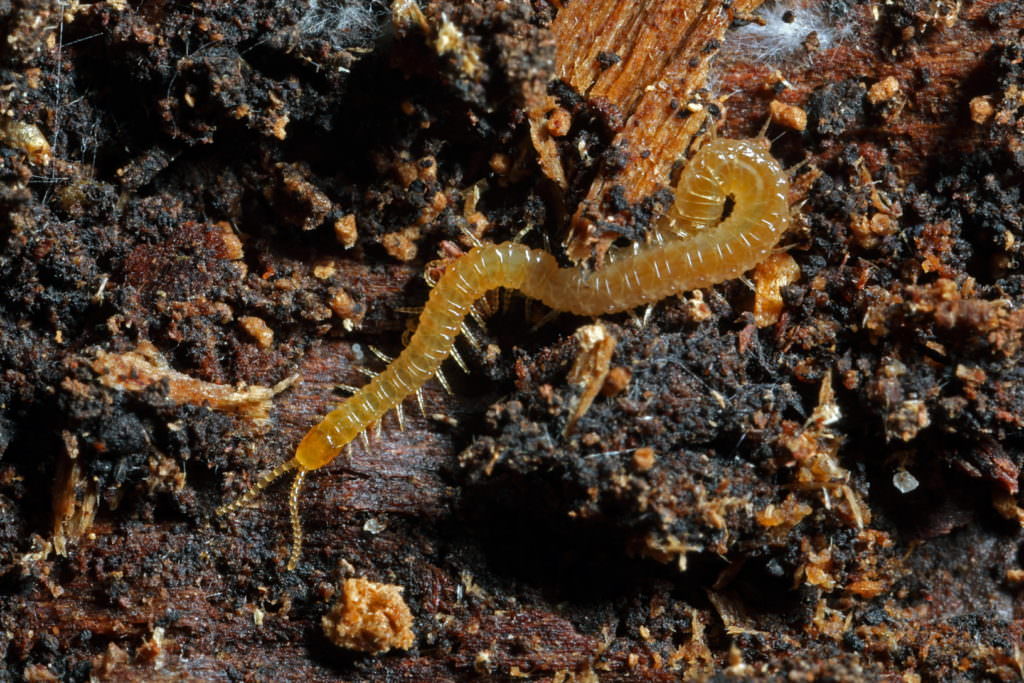
Centipede (Geophilus truncorum) on a pine log, Findhorn Hinterland.
The decomposition process begins in most cases with fungi. Whilst many fungi live in the soil, where they have a mycorrhizal relationship with the roots of living trees, there is a particular group known as saprotrophic fungi that live in, and help to break down, dead organic matter, especially dead wood. Some species, known as white rot fungi, specialise in breaking down the lignin in wood, whilst brown rot fungi feed on and decompose the cellulose. The tinder fungus (Fomes fomentarius), which is common on dead birches, is a white rot fungus, whilst the Dyer’s mazegill fungus (Phaeolus schweinitzii), which produces large brackets as fruiting bodies, is a brown rot species.
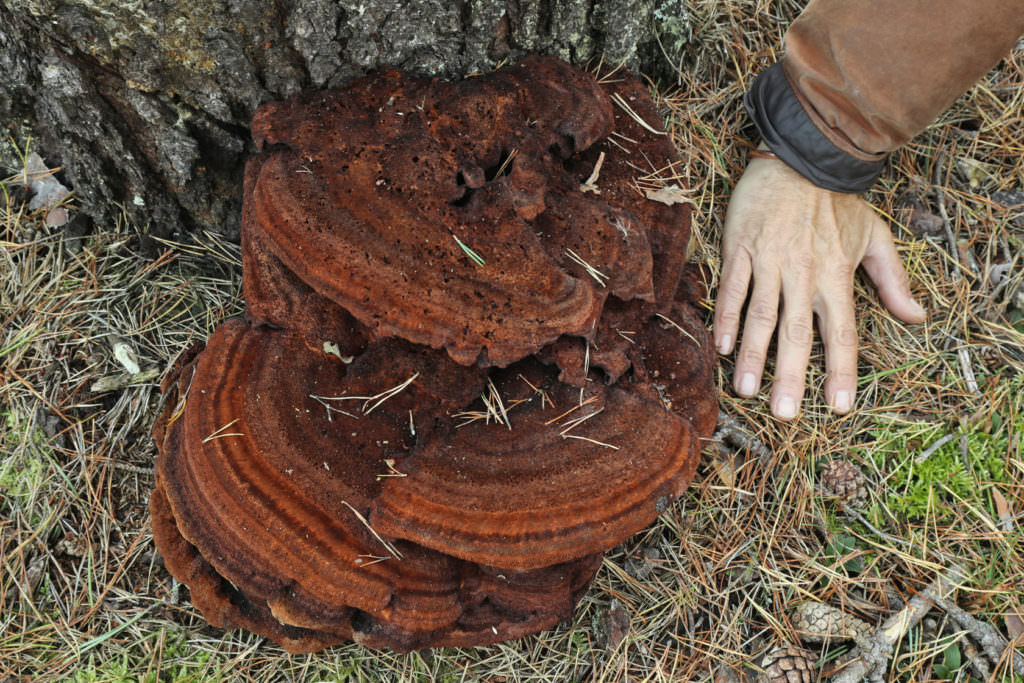
Dyer’s mazeglll fungus (Phaeolus schweinitzii) at the base of a pine stump on the Findhorn Hinterland, with a hand for scale.
Breaking apart an old log can sometimes reveal the network of threadlike white filaments known as hyphae that are the main body of fungi – the brackets, crusts and occasional mushrooms that appear on the surface of a log are just the reproductive structures that release the fungal spores.
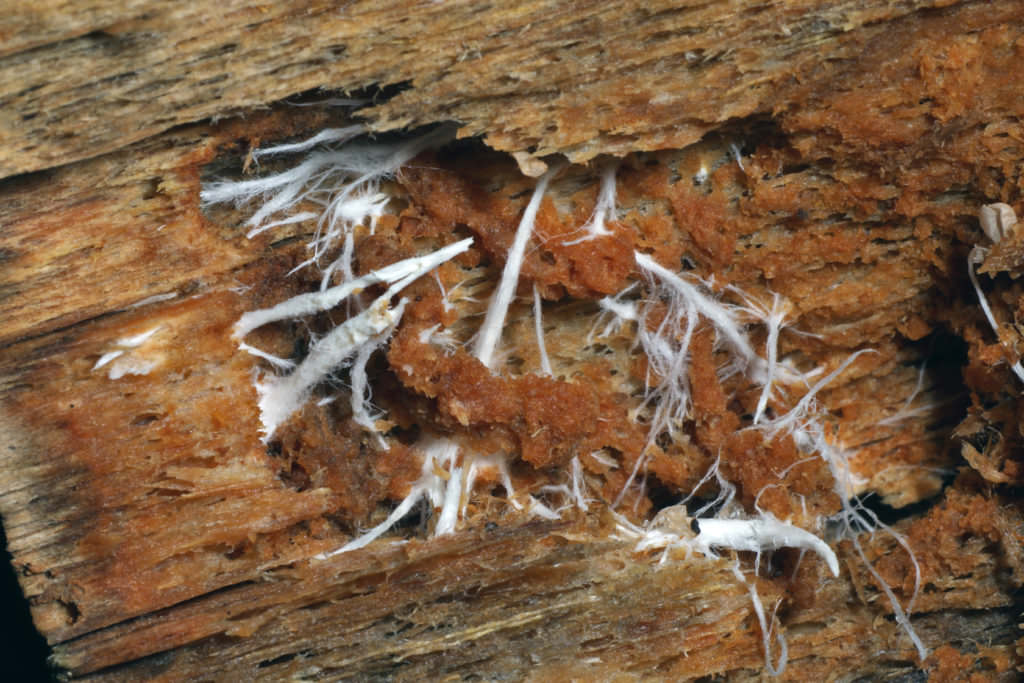
Fungal hyphae on an old pine log, showing how they penetrate through the dead wood.
Slime moulds complement the function of fungi by feeding on and decomposing bacteria and micro-organisms, as well as decaying organic matter, and are usually seen in summer or early autumn, whenever their often brightly-coloured fruiting bodies or sporocarps appear.
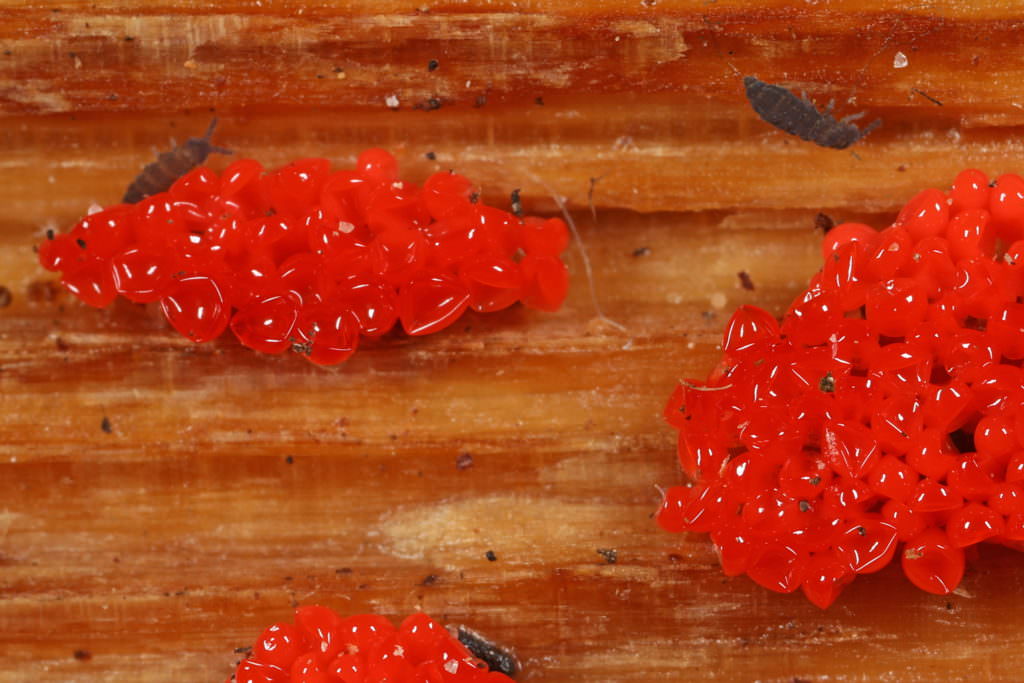
Springtails (Hypogastrura sp.,) beside the fruiting bodies of a slime mould (Arcyria ferruginea) on a piece of pine log, on the Findhorn Hinterland.
The spread of fungi and slime moulds within dead wood are often assisted by the wood-boring larvae of beetles, which create tunnels or galleries under the bark of a log as they feed, in some cases over a period of several years. These culminate in a small chamber where the beetle larvae undergo their process of pupation and metamorphosis, and from which the adult beetles emerge.
Small invertebrates such as mites and springtails feed on fungal hyphae and decaying organic matter in dead wood, and are themselves food for small spiders, centipedes and other, predatory species of mites.
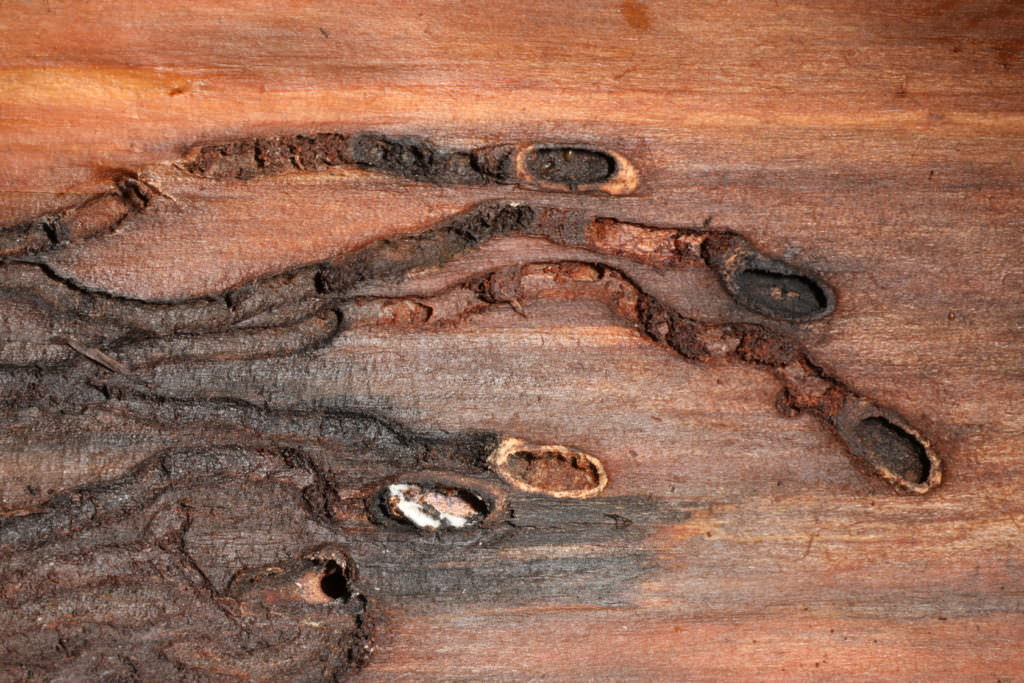
Pattern of galleries made by beetle larvae under the bark of a Scots pine log (Pinus sylvestris), Findhorn Hinterland.
A wide range of invertebrate species utilise dead wood as a space to overwinter in, as it provides protection from the harshness of winter and shelter from potential predators. On the Hinterland we’ve found adults of species such as the hawthorn shield bug (Acanthosoma haemorrhoidale) and the two-banded longhorn beetle (Rhagium bifasciatum) overwintering inside old logs.
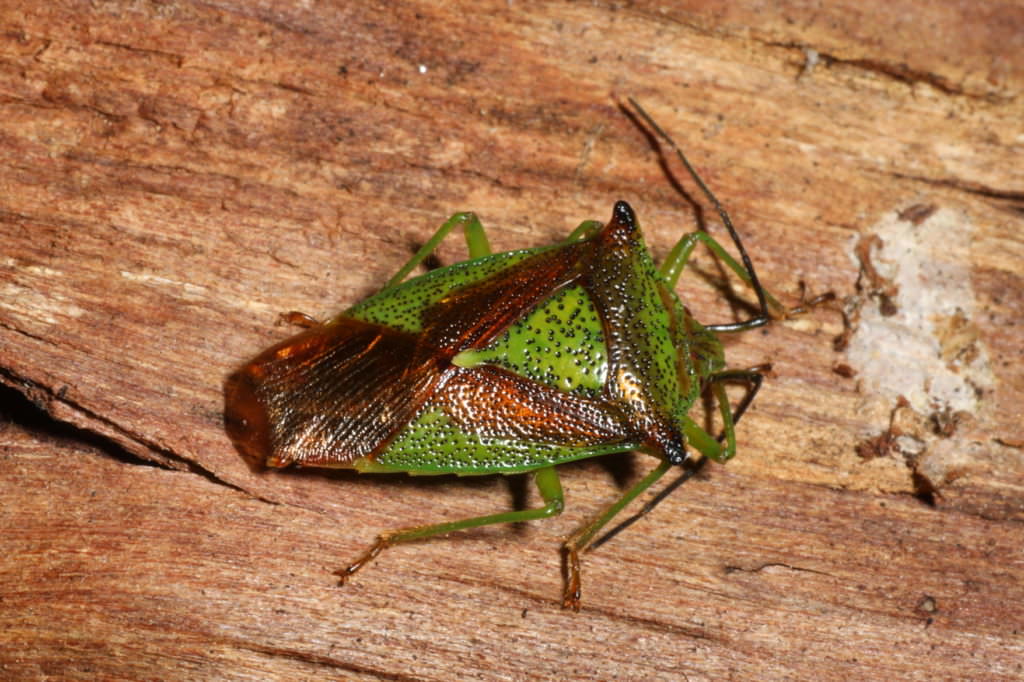
Hawthorn shieldbug (Acanthosoma haemorrhoidale) at its overwintering site under the loose bark of a pine log, Findhorn Hinterland.
However, the protection is not always effective, and both adult insects and their larvae are targeted by parasitic species such as Ichneumon wasps that inject their eggs into a host species, and by insectivorous birds such as treecreepers and woodpeckers that search out insects on, and in, dead wood respectively.
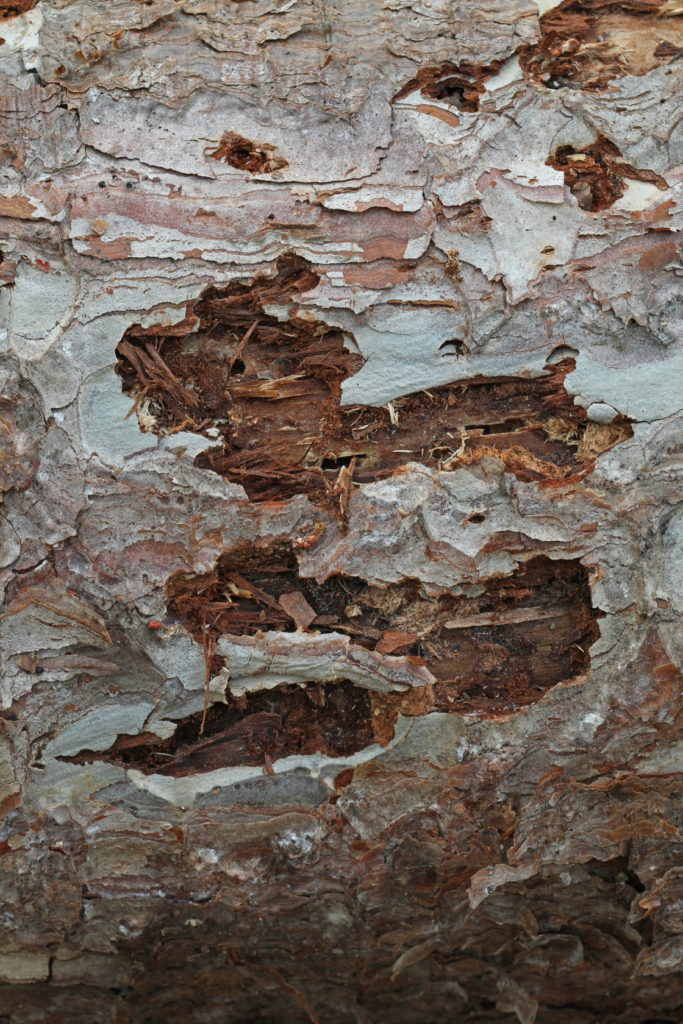
Feeding damage from a woodpecker on a pine log on the Findhorn Hinterland.
Some of the most abundant invertebrates that occur in dead wood are woodlice, of which there are over 30 species in the UK. Turning over a piece of dead wood or an old log will almost invariably reveal some of these, usually the common woodlouse (Oniscus asellus). Woodlice are actually terrestrial crustaceans that are closely related to marine species such as crabs, and their origin in the sea is reflected by the fact that they require damp places in which to live. They are heavily-armoured with tough exoskeletons and feed on dead wood, helping to recycle the nutrients stored there.
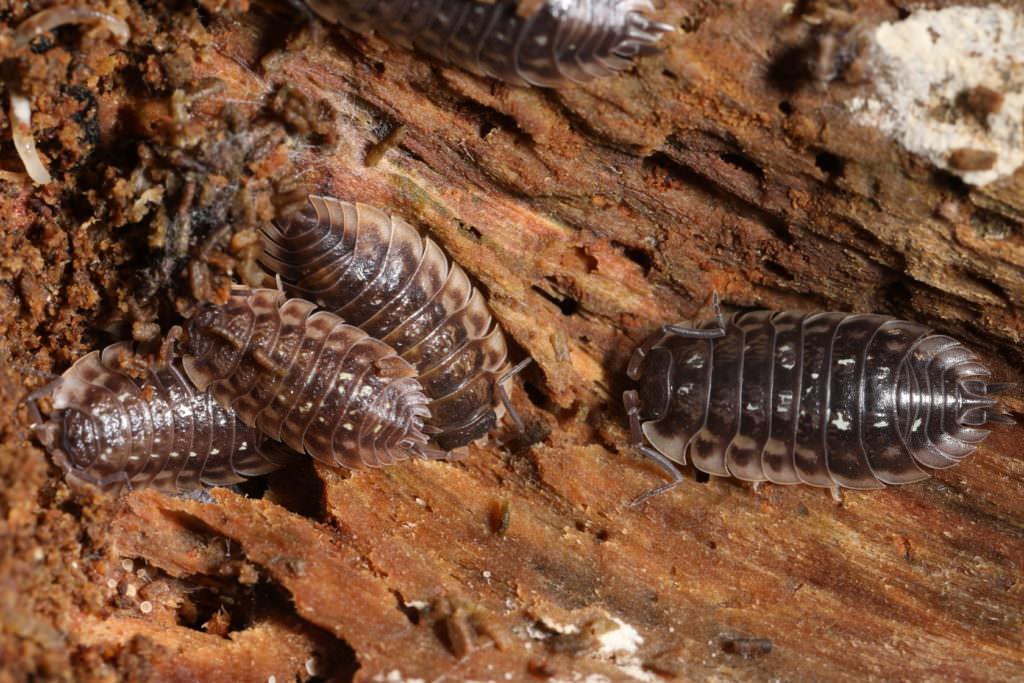
Common woodlice (Oniscus asellus) on a piece of dead pine wood, Findhorn Hinterland
This is just a very brief overview of some of the life that decomposes and transforms dead wood, releasing the organic matter there so that it can recirculate within the woodland ecosystem. For more information please see the series of blogs that start at: https://alanwatsonfeatherstone.com/the-abundant-life-of-dead-wood-part-1/ .
On the Findhorn Hinterland we’re leaving dead wood throughout the woodland areas, both as entire logs in some cases, and as piles of brash (a mixture of branches of different sizes). Hopefully this article has illuminated the purpose behind this, and the vital importance of dead wood within the living fabric of a healthy woodland ecosystem.
Alan Watson Featherstone
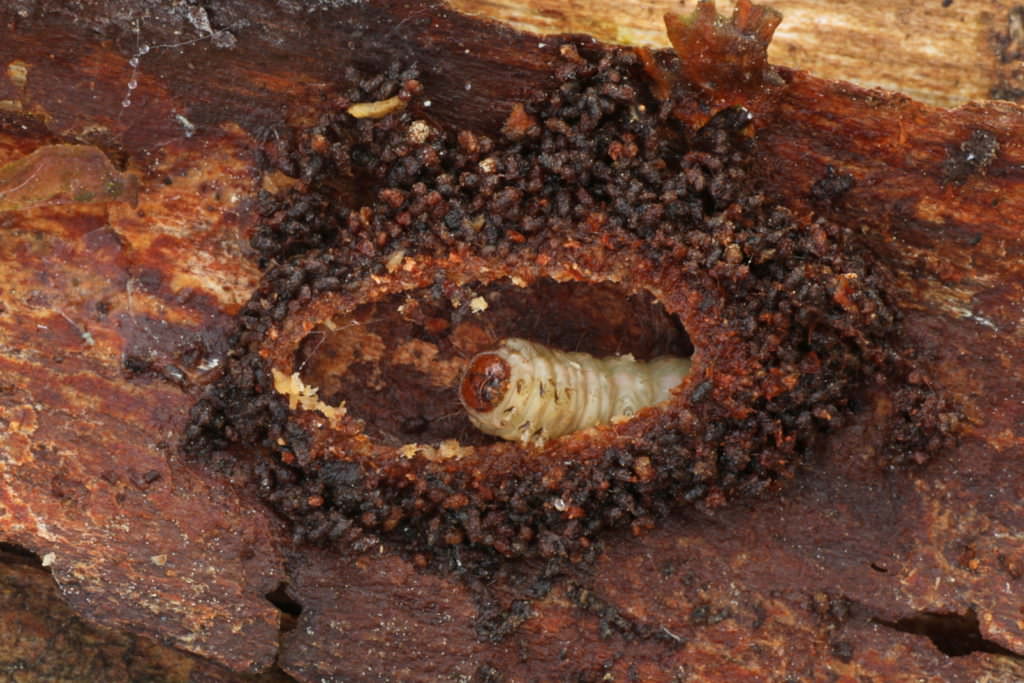
Beetle larva or grub inside its cocoon, in preparation for pupation, inside an old pine log on the Findhorn Hinterland.

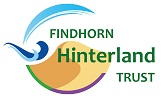















The importance of dead wood in the forest
In much of our modern day world, the conventional view of dead wood is often that it is unsightly, untidy and a waste if it is left lying around in a woodland, and that it should be tidied up, taken away and used for some human purpose. Sadly, this reflects a lack of understanding of how healthy ecosystems function, and is an indication of how far removed from Nature our society has become. Here at the Findhorn Hinterland we seek to reconnect deeply with our local environment and demonstrate a renewed way of living in harmony and balance with the natural world around us, so our approach to dead wood is quite different.
Young regenerating birch trees in the Fallen Acres area of the Findhorn Hinterland, showing dead wood left on the forest floor.
Dead wood is quite literally the compost heap of the forest – the place where old organic material is broken down naturally, recycled and reintegrated back into the living web of life that is a woodland ecosystem. An entire community of specialist organisms lives on and in dead wood, having evolved specifically to play a role in Nature’s recycling process. These organisms include fungi, slime moulds, woodlice, beetle larvae, springtails, mites and millipedes, to name some of them, as well as various predators such as spiders and centipedes that feed on the invertebrates in dead wood.
Centipede (Geophilus truncorum) on a pine log, Findhorn Hinterland.
The decomposition process begins in most cases with fungi. Whilst many fungi live in the soil, where they have a mycorrhizal relationship with the roots of living trees, there is a particular group known as saprotrophic fungi that live in, and help to break down, dead organic matter, especially dead wood. Some species, known as white rot fungi, specialise in breaking down the lignin in wood, whilst brown rot fungi feed on and decompose the cellulose. The tinder fungus (Fomes fomentarius), which is common on dead birches, is a white rot fungus, whilst the Dyer’s mazegill fungus (Phaeolus schweinitzii), which produces large brackets as fruiting bodies, is a brown rot species.
Dyer’s mazeglll fungus (Phaeolus schweinitzii) at the base of a pine stump on the Findhorn Hinterland, with a hand for scale.
Breaking apart an old log can sometimes reveal the network of threadlike white filaments known as hyphae that are the main body of fungi – the brackets, crusts and occasional mushrooms that appear on the surface of a log are just the reproductive structures that release the fungal spores.
Fungal hyphae on an old pine log, showing how they penetrate through the dead wood.
Slime moulds complement the function of fungi by feeding on and decomposing bacteria and micro-organisms, as well as decaying organic matter, and are usually seen in summer or early autumn, whenever their often brightly-coloured fruiting bodies or sporocarps appear.
Springtails (Hypogastrura sp.,) beside the fruiting bodies of a slime mould (Arcyria ferruginea) on a piece of pine log, on the Findhorn Hinterland.
The spread of fungi and slime moulds within dead wood are often assisted by the wood-boring larvae of beetles, which create tunnels or galleries under the bark of a log as they feed, in some cases over a period of several years. These culminate in a small chamber where the beetle larvae undergo their process of pupation and metamorphosis, and from which the adult beetles emerge.
Small invertebrates such as mites and springtails feed on fungal hyphae and decaying organic matter in dead wood, and are themselves food for small spiders, centipedes and other, predatory species of mites.
Pattern of galleries made by beetle larvae under the bark of a Scots pine log (Pinus sylvestris), Findhorn Hinterland.
A wide range of invertebrate species utilise dead wood as a space to overwinter in, as it provides protection from the harshness of winter and shelter from potential predators. On the Hinterland we’ve found adults of species such as the hawthorn shield bug (Acanthosoma haemorrhoidale) and the two-banded longhorn beetle (Rhagium bifasciatum) overwintering inside old logs.
Hawthorn shieldbug (Acanthosoma haemorrhoidale) at its overwintering site under the loose bark of a pine log, Findhorn Hinterland.
However, the protection is not always effective, and both adult insects and their larvae are targeted by parasitic species such as Ichneumon wasps that inject their eggs into a host species, and by insectivorous birds such as treecreepers and woodpeckers that search out insects on, and in, dead wood respectively.
Feeding damage from a woodpecker on a pine log on the Findhorn Hinterland.
Some of the most abundant invertebrates that occur in dead wood are woodlice, of which there are over 30 species in the UK. Turning over a piece of dead wood or an old log will almost invariably reveal some of these, usually the common woodlouse (Oniscus asellus). Woodlice are actually terrestrial crustaceans that are closely related to marine species such as crabs, and their origin in the sea is reflected by the fact that they require damp places in which to live. They are heavily-armoured with tough exoskeletons and feed on dead wood, helping to recycle the nutrients stored there.
Common woodlice (Oniscus asellus) on a piece of dead pine wood, Findhorn Hinterland
This is just a very brief overview of some of the life that decomposes and transforms dead wood, releasing the organic matter there so that it can recirculate within the woodland ecosystem. For more information please see the series of blogs that start at: https://alanwatsonfeatherstone.com/the-abundant-life-of-dead-wood-part-1/ .
On the Findhorn Hinterland we’re leaving dead wood throughout the woodland areas, both as entire logs in some cases, and as piles of brash (a mixture of branches of different sizes). Hopefully this article has illuminated the purpose behind this, and the vital importance of dead wood within the living fabric of a healthy woodland ecosystem.
Alan Watson Featherstone
Beetle larva or grub inside its cocoon, in preparation for pupation, inside an old pine log on the Findhorn Hinterland.